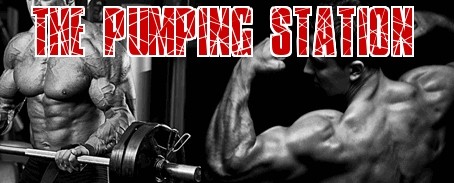Variations on the Dumbbell Curl
Muscles are extremely adaptive. The longer you work them with a single exercise over time, less benefit you will get from that specific exercise. Yet unfortunately, ever trainers who should know better show up to the gym to perform the same stale routine that they have doing for months, or even years in some cases. It's great to find a workout routine that you enjoy, but if you really want to see serious, constant progress, you have to mix things up a little bit.
The area that goes stagnant most often is with bicep and arm training. If you are just doing typical standing dumbbell curls, your gains will stagnate after awhile.
Here are a few variations on the dumbbell curl you can throw into your routine on arms day.
Hammer Curl - To perform the hammer curl, lift the dumbbells so that they the weights are facing straight up and down, with your palms facing inward. This kind of curl actually targets the brachioradialis, which is a forearm muscle, but it uses the bicep for support.
Don't just lift the weights three fourths of the way up when doing the hammer curl. In order to get the most benefit you need to make sure you are bringing them all the way up.
Reverse Curl - This is another great way to work both your biceps and your forearms. With a typical curl, you have your palms up to lift the weight. But in this variation, you keep your palms facing downward. While the performing the reverse curl, you might be tempted to "cheat" by moving your body and elbows forward. Your elbows don't have to be perfectly stable, but try to prevent them from moving more than just an inch or two.
Zottman Curl - The zottman curl is a bit of an oddball, but it can be effective for thoroughly working out your biceps and forearms. In this variation, you lift the dumbbells up just like you would with a regular curl, but at the top position, you flip the dumbbells around so that your palms are facing downward like in the reverse curl, and lower the weight. And the bottom position, you flip palms up again and repeat for the next rep.
Incline Curl - To perform and dumbbell incline curl, lie at a forty-five degree angle on an incline bench, hang your arms straight down at your sides, and perform the curl. Lying at this angle forces your biceps to bear the weight throughout the full range of motion. In fact, you might discover that by lying at this angle you aren't able to lift as much weight than during the typical dumbbell alternating curl. Like other curls, you can either lift the weights simultaneously or in an alternating fashion.
Preacher Curl - This is also known as the "Scott Curl" because it was a favorite the first Mr. Olympia, Larry Scott. To perform this exercise, you are going to need a preacher curl bench. Simply rest your arms on the bench at a forty-five degree angle and curl normally. Unlike other curl variations, which target the biceps brachii, the preacher curl actually targets the brachialis.
Concentration Curl - If you work out at home and don't have a preacher bench on hand, you might instead try concentration curls. To do these, sit on a bench, hold a dumbbell in one hand and let it hang between your legs. Slightly rest your arm just above your elbow against your leg so that it is at a bit of an angle, like in the preacher curl. Now simply perform the curl normally. With this curl, you are only able to work a single arm at a time. Like the preacher curl, it primarily works the brachialis.
When performing these curls, as with performing any exercise, you always have to keep tempo in mind. Flinging the weight around really quickly might get you out of the gym more quickly and be a nice ego boost, but it won't really lead to more muscle gains. Ideally, every rep should last about four or five second, with about two or three seconds to lift the weight, and about two seconds to lower it.
Click Here to Sign Up for Your Free Bodybuilding Magazine Subscription
